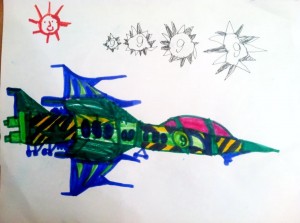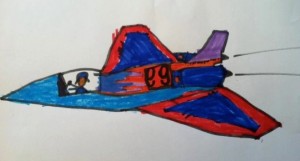Why is our name the “Building Blocks of Cognition Laboratory”?
First of all, what do we mean by ‘building blocks’? Individual Lego pieces or wooden building blocks can be put together to build many different complex structures. This activity is creative, cognitively demanding, and – for many children and some adults – fun! Below, Silvia outlines the lab’s three main lines of research and then explains the personal story behind the byline. But first, a picture of Silvia’s adorable nephew, who is obsessed with Lego.
Now, our lab is named the “Building Blocks of Cognition Laboratory” for 3 reasons:
1. The impressive array of human cognitive abilities arises from interactions among a set of core mental processes, just as a complex structure can be built from simple pieces. We design experiments to isolate some of these core processes. [See publications]
2. Cognition is ‘built’ as the brain matures. We are engaged in a large study tracking the neural changes that underlie the emergence of high-level cognition across ages 6-19. In addition to studying typically development, we conduct research involving children with focal brain damage or Tourette Syndrome.
3. Experience influences how the brain is ‘built’, and how it functions throughout life. We are currently studying experience-dependent brain plasticity in young adults, examining whether and how changes in mental habits can alter brain function.We seek to extend this research to the study of brain plasticity in children.
4. The original reason for the lab’s name: Silvia watched as her brother Eric created incredible Lego structures as a child, pursued a career in architecture, worked hard for many years, and eventually established a successful architecture firm with his wife Mimi. From an early age, Eric and Mimi’s son has loved to draw and build with Legos, and his skills in these areas have probably already surpassed those of his auntie’s…
Can this little guy’s early talent be explained by genes? After all, Eric and Mimi are both talented architects. Or can it be explained by his environment? After all, his parents encourage him to draw and create and build, and give him toys that will help him to develop these skills – and he watches them enthusiastically sketch out building plans at the kitchen table. The answer is that it’s neither ‘nature’ nor ‘nurture’ alone; Giao’s brain is developing through a complex interplay between his genes and environment. Through our research on brain function, development, and plasticity, we chip away at the complex yet fundamental question of how each of us becomes who we are: unique individuals, each with our own skills and interests. Ultimately, we hope that our insights on the role of environmental factors (both negative and positive) on brain development will help children from underserved communities reach their full potential.




